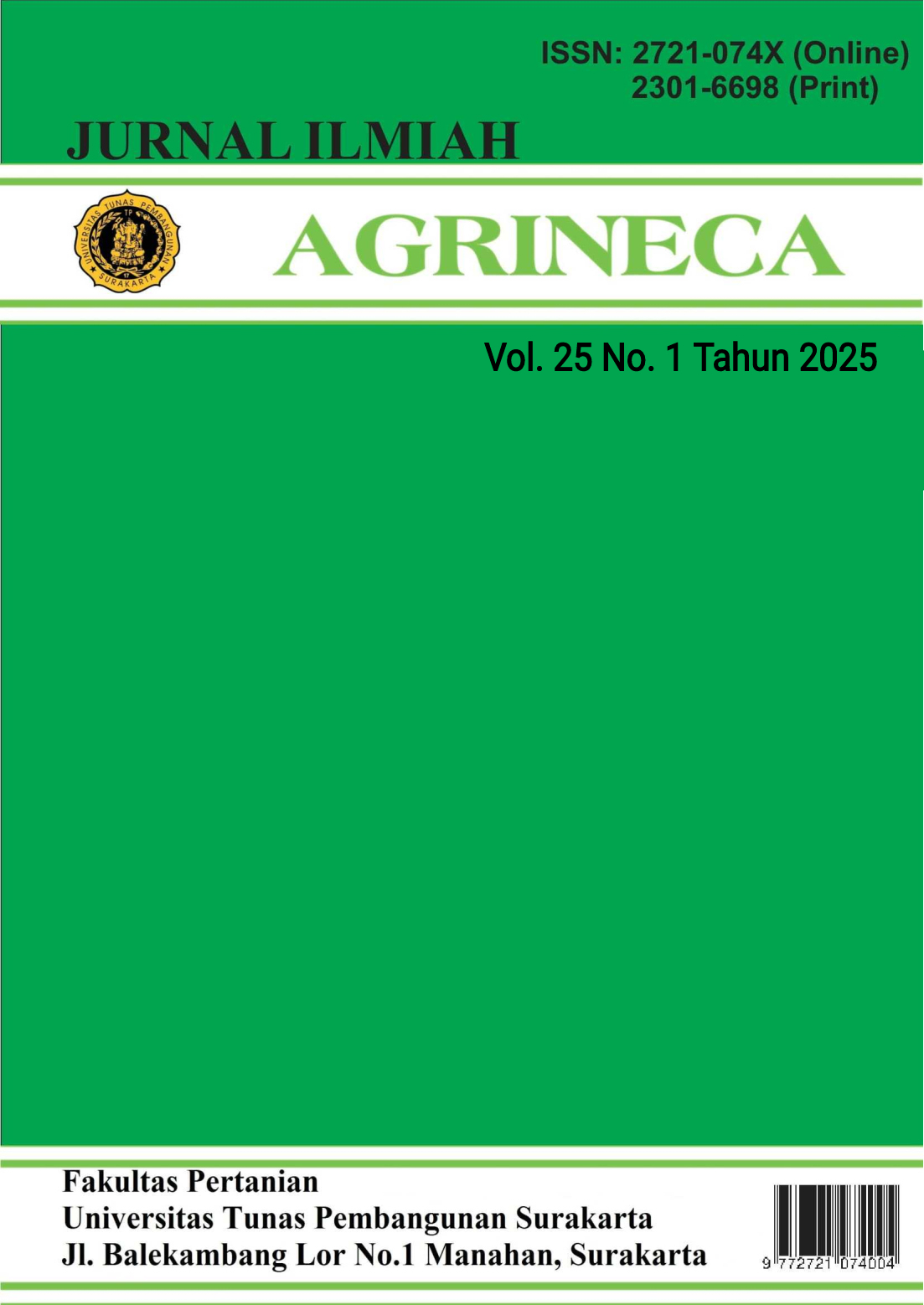Identifikasi Bakteri Endofit Dalam Penerapan Eco-Enzyme Pada Budidaya Jahe Merah (Zingiber Officinale Var. Rubrum)
Abstrak
During the COVID-19 pandemic, the use of red ginger as a herbal treatment increased significantly, establishing it as a highly popular herbal commodity. However, disruptions caused by plant pests have led to fluctuating demand. One major issue is bacterial wilt disease caused by Ralstonia solanacearum, which can result in yield losses of up to 90%. Biological control using endophytic bacteria has shown promise in managing bacterial wilt, particularly bacteria residing in the red ginger rhizosphere. This research aimed to explore and identify endophytic bacteria from the rhizosphere of red ginger plants. The study was conducted from September to October 2022 at the Greenhouse and Integrated Chemistry and Biology Laboratory, PGRI University Yogyakarta. Soil samples were collected from red ginger cultivation systems implementing eco-enzymes as part of a healthy farming approach. Four treatments were applied with three replications: no eco-enzyme, 0.1% eco-enzyme, 0.3% eco-enzyme, and 0.5% eco-enzyme. Each treatment involved three soil samplings, yielding a total of 36 soil samples for analysis. Exploration of the rhizosphere resulted in the isolation of 36 bacterial strains, of which 20 were identified as belonging to the genera Bacillus sp. and Pasteuria sp. Among these, 16 isolates were identified as Bacillus sp., including six from the no eco-enzyme treatment, one from the 0.3% eco-enzyme treatment, and nine from the 0.5% eco-enzyme treatment. Additionally, five isolates were identified as Pasteuria sp., with two from the 0.1% eco-enzyme treatment and three from the 0.3% eco-enzyme treatment.

